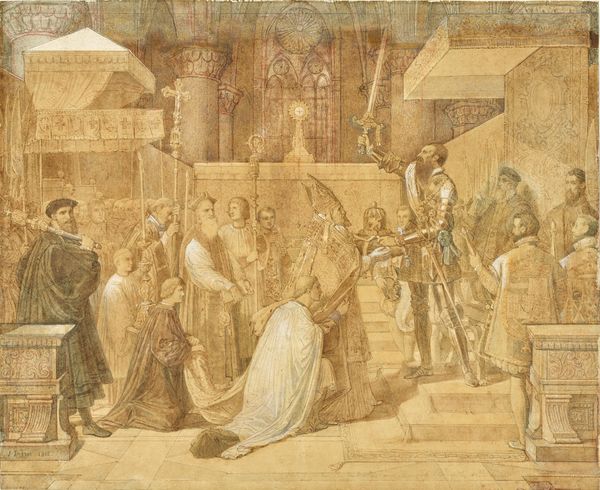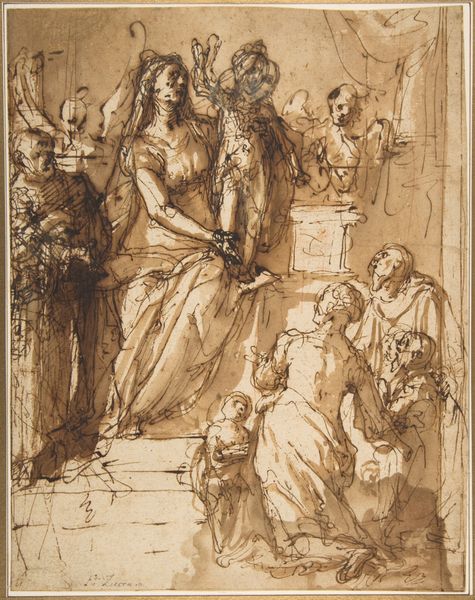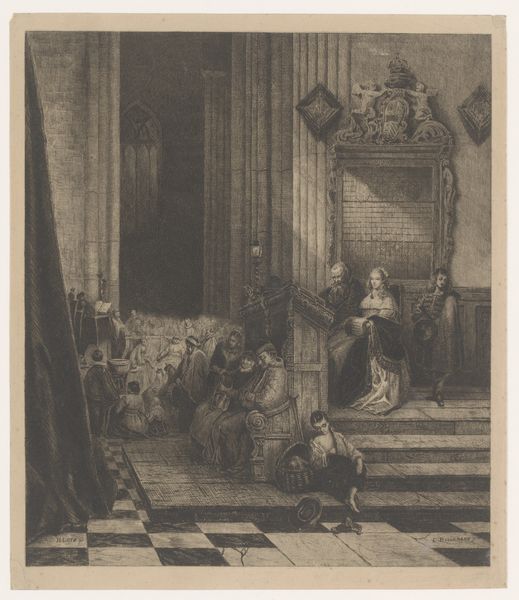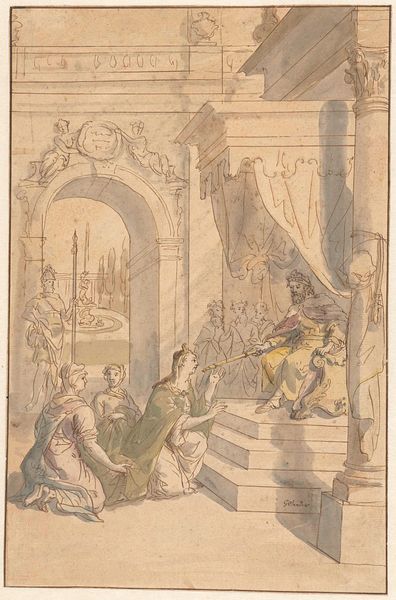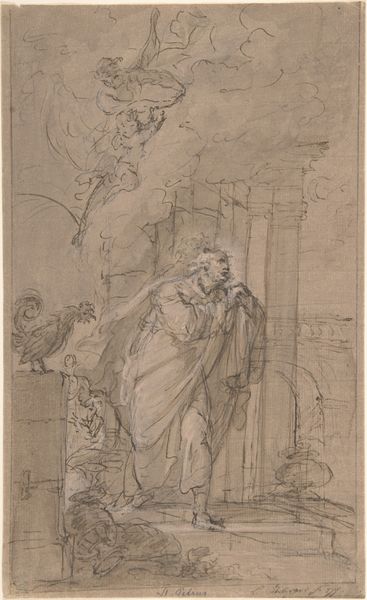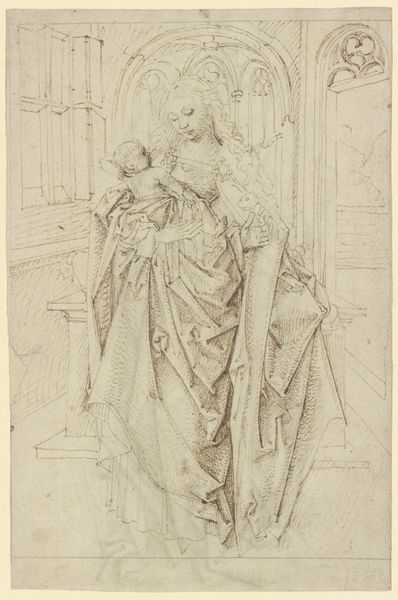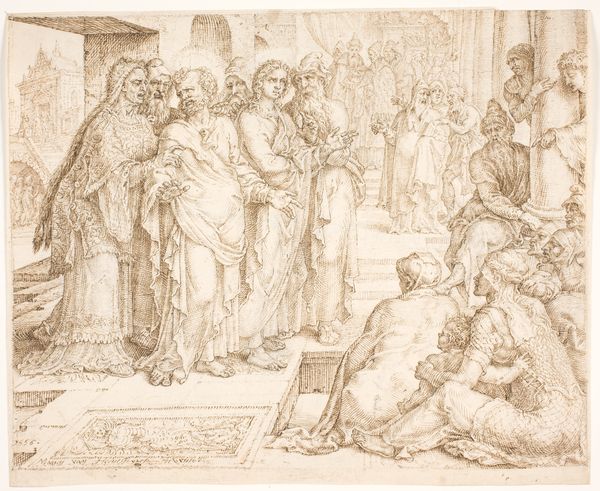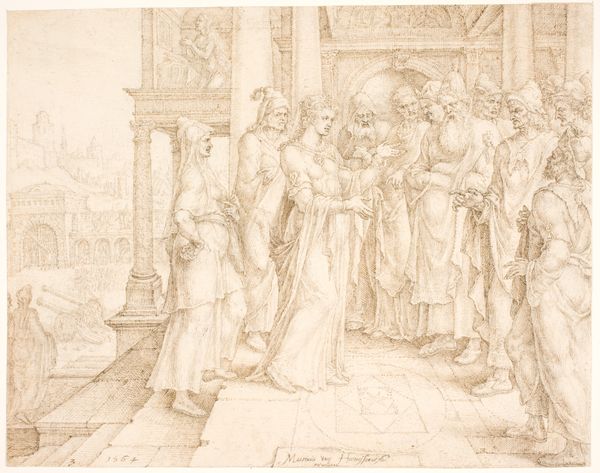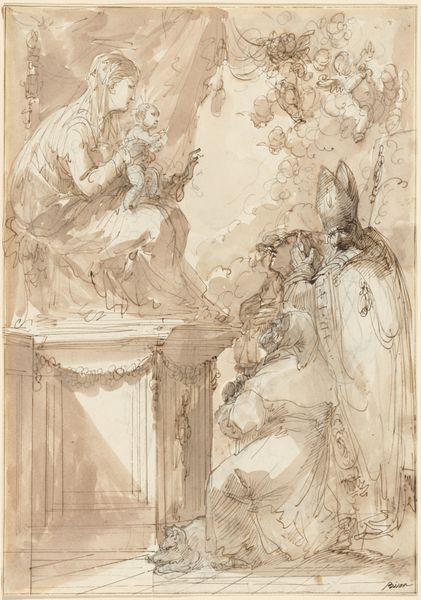
painting, oil-paint
#
painting
#
oil-paint
#
ancient-mediterranean
#
genre-painting
#
history-painting
Copyright: Public domain
Curator: Ah, "In the Temple," an 1871 oil painting by Lawrence Alma-Tadema. The painting captures a slice of what the artist imagined as everyday life in antiquity. Editor: It has an unexpected stillness. Despite the bustling figures in the background, the focus is pulled towards this quiet priestess at the foreground, and that solemn colour palette seems to enhance that sense of serenity. Curator: Notice how Alma-Tadema meticulously recreates the surfaces—the marble textures, the metal of the cymbals in her hand, even the delicate floral crown atop her head. Each detail speaks volumes about Victorian society’s fascination with classical material culture, you see. Editor: Yes, the painting undeniably exhibits a very sophisticated use of depth. The colonnades guide your eye into the heart of the space while simultaneously layering the composition, using the receding space almost to mimic a play's backdrop for its subject, the woman with cymbals. The viewer almost is given the best seat in the house to observe an ancient ritual. Curator: What interests me is the construction of the artwork. Look closely. What’s represented here isn’t historical accuracy but a constructed version of antiquity seen through a 19th-century lens, produced through very specific processes of material gathering, labor and production, tailored for bourgeois consumption. Editor: Maybe, but consider the pure aesthetics of the work. Alma-Tadema has made use of both realistic detail and theatrical structure in creating the artwork: the symmetry, the balance, and that contrast in tones creates not just a painting, but a feeling. It conveys both beauty and melancholy at the same time. Curator: But how much of that aesthetic feeling is due to Victorian art market and exhibition structures that influenced Alma-Tadema’s style, his production pipeline and relationship with his patrons? These aren't timeless emotional effects; they are outputs of that cultural moment, right? Editor: It is a testament to its intricate visuality that, across such distance in time and culture, we still can observe it and react to its effect so immediately! Curator: True, this encounter is filtered through so much—labor, production, exhibition, the artist’s position, even our own present… it’s fascinating.
Comments
No comments
Be the first to comment and join the conversation on the ultimate creative platform.
